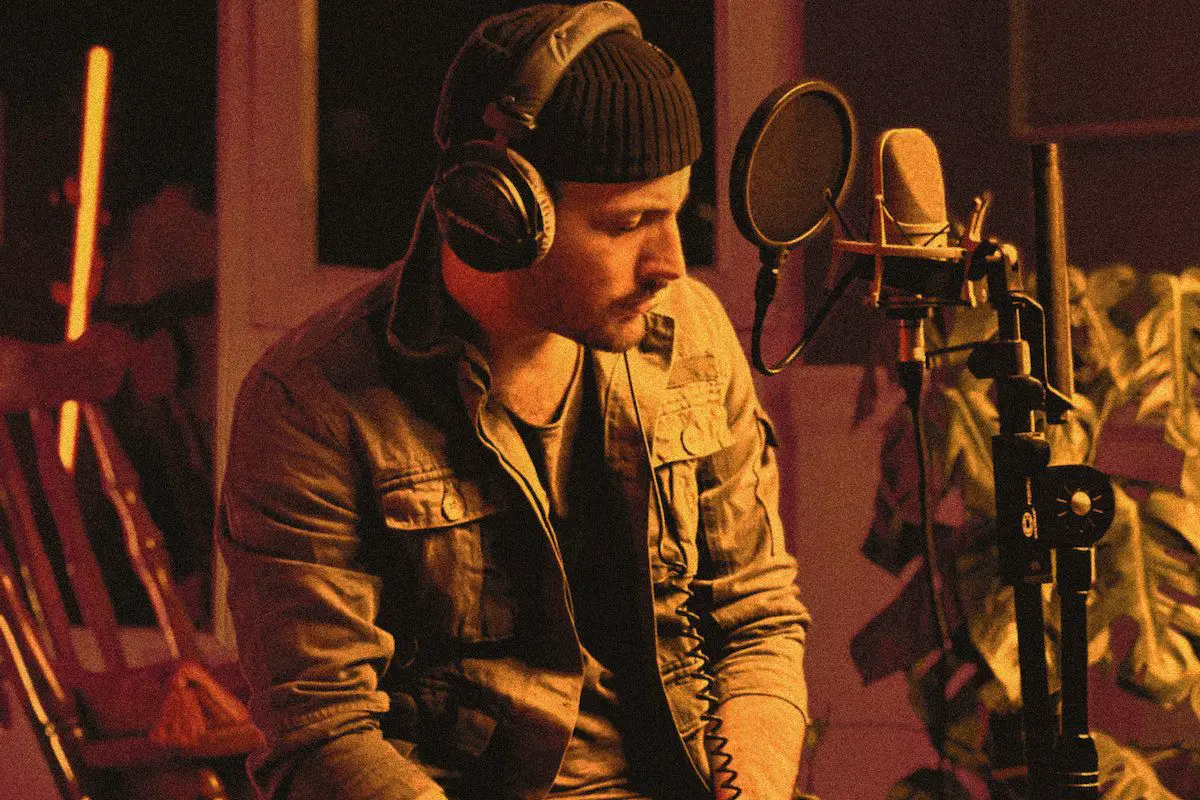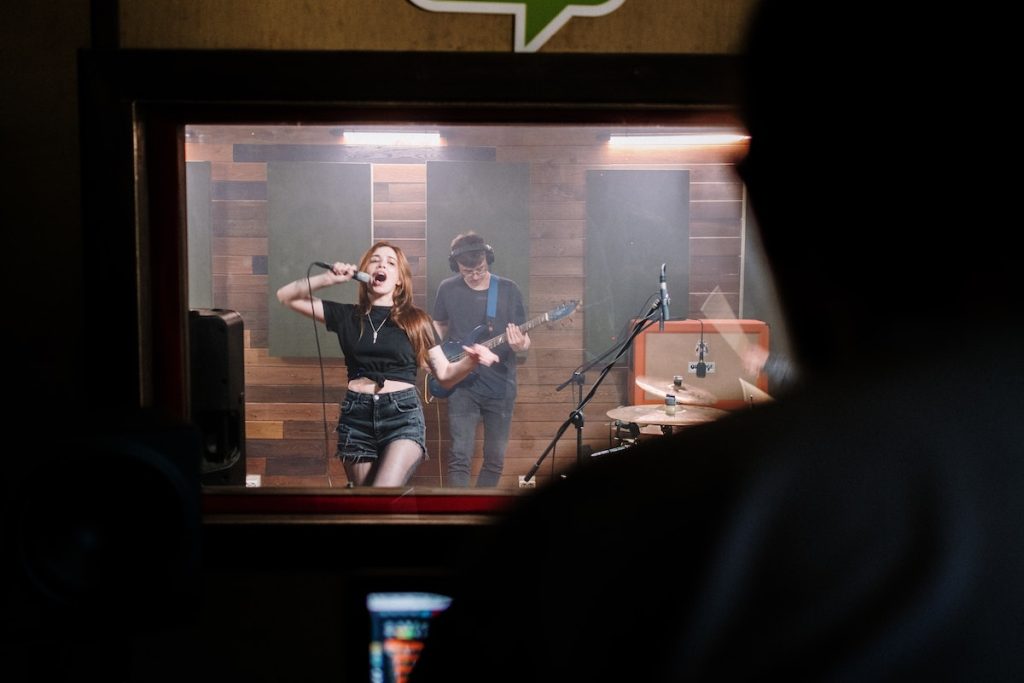Are you ready to take your music production to the next level? Discover the crucial step that separates amateurs from professionals and unlocks the true potential of your songs. Dive into the world of tracking, where each instrument comes alive, layer by layer, creating a masterpiece that resonates with every note. So what exactly is tracking in music production?
What is tracking? Tracking in music production is the process of recording individual parts of a song, typically one instrument or vocal part at a time.
What is tracking in music production?
In music production, tracking is the process of recording individual parts or tracks of a song, typically one at a time. These parts can be everything from vocals to instruments, to sound effects, each recorded separately. This method provides flexibility and control as each track can be manipulated, edited, and mixed independently during the post-production phase.

For example, when recording a band, you might start by laying down the drum tracks first, followed by bass, guitars, keyboards, and finally, vocals. This method provides you with maximum control over each element, making it easier to fine-tune, edit, and balance the overall mix. In fact, tracking revolutionized the music industry, as it allowed producers to create more complex and intricate arrangements than ever before.
AKAI Professional MPK Mini MK3

AKAI Professional MPK Mini MK3
What is the difference between tracking and recording?
In music production, the terms “tracking” and “recording” are often used interchangeably, but they can have slightly different connotations depending on the context.
“Recording” is a broad term that refers to the entire process of capturing audio, which can include everything from the initial tracking to overdubbing to live recording of an entire band. It’s the umbrella term for anything that involves capturing and storing sound for later reproduction or manipulation.
“Tracking,” on the other hand, typically refers to a specific stage in the recording process. In essence, it refers to the process of recording onto an individual track. For instance, if someone says, “Let’s track the vocals,” it means they intend to focus solely on recording vocals.
Why is tracking important?
In music production, tracking plays an essential role in determining the overall quality and impact of the final output. When each instrument and vocal part is individually tracked, it not only provides the flexibility to manipulate each sound source independently but also lays the groundwork for the emotional depth of the final mix.
While editing tools provide a safety net for fixing mistakes, there are limits to what can be achieved without compromising the natural sound of a performance.
While editing tools provide a safety net for fixing mistakes, there are limits to what can be achieved without compromising the natural sound of a performance. No plugin or post-production trick can match the authenticity of a remarkable live performance. By focusing on delivering your best performance during the tracking phase, you set a captivating experience that resonates with listeners.
What are some common tracking techniques to enhance your sound?
When it comes to tracking, there are several techniques you can use to elevate your sound and add depth to your mix. Here are a few tried-and-true methods that can help you get the most out of your tracking sessions:
- Double-tracking: This technique involves recording the same part twice and then blending the two takes together. Double tracking can add thickness and depth to instruments like guitars and vocals, giving your mix a richer, fuller sound.
- Mic placement: Experimenting with different mic placements can drastically change the tone of your recordings. For example, moving a mic closer to or farther away from a guitar amp can alter the amount of bass and treble captured in the recording. Don’t be afraid to try various positions until you find the sweet spot.
- Room ambiance: The sound of the room you’re recording in can add character and vibe to your tracks. Try setting up mics at different distances from the source to capture varying amounts of room ambiance. This can give your mix a sense of depth and space.
- Layering: Sometimes, adding extra layers of instruments or sounds can make your mix more interesting and dynamic. For example, you might layer a synth pad beneath a piano track to create a lush, ambient texture.
Here’s a little do’s and don’ts table of tracking
| Do’s of Tracking | Don’ts of Tracking |
|---|---|
| Do take the time to set up each instrument or vocal line separately for the best sound. | Don’t rush through the tracking process, as each track requires individual attention. |
| Do use a click track or metronome to ensure that all tracks line up correctly. | Don’t neglect timing; inconsistencies can create sync issues during the mixing stage. |
| Do listen carefully to each track in isolation and in the context of the mix. | Don’t rely solely on visuals or waveform representations. Your ears are the best judge of a good mix. |
| Do label and organize your tracks clearly to avoid confusion later. | Don’t leave tracks unnamed or unorganized; this can lead to confusion and mistakes in the mixing process. |
Why should you use real-time effects during tracking?
Tracking is not only about capturing the performance; it can also be a source of creative inspiration. Just as a spark ignites a flame, tracking can ignite fresh ideas that elevate your music to new heights. As you immerse yourself in the recording process, let your creativity flow and explore the possibilities that arise.
Real-time effects like Vocal Bender, Waves Tune Real-Time, and OVox can infuse your tracks with a unique vibe—especially if you’re working on pop or hip-hop genres. These tools allow you to experiment and shape your sound at the moment, capturing the desired emotion and style directly during tracking.
While real-time effects can enhance your tracks, it’s important to strike a balance and ensure they don’t overshadow the core element of a great performance. Think of them as seasoning, adding flavor without overpowering the main dish. Maintain a keen focus on delivering outstanding performance, allowing the effects to enhance your sound rather than become the sole focus.
Why should tracking and songwriting be a separate process?
During songwriting, you can let your imagination flow freely without worrying about the precision required in tracking. It’s the phase where you brainstorm melodies, harmonies, and lyrics, essentially shaping the heart and soul of your piece.
When you move to the tracking phase, the focus shifts to executing each part as cleanly and expressively as possible. The freedom to focus solely on performance allows you to deliver your best without distraction. Combining the creative chaos of songwriting with the structured precision of performance can stifle your artistic expression.

By tackling songwriting and tracking separately, you allow both processes to flourish independently, unleashing their true potential. Instead of compromising the creativity of songwriting or the precision of performance, let each step shine in its own spotlight. Nurture the free-spirited artist within you during the songwriting phase, and then channel your focus and technical prowess during tracking for a harmonious blend of creativity and professionalism
Advantages and disadvantages of tracking
Tracking in music production, or recording individual elements of a song separately, offers a range of advantages and disadvantages.
Advantages of tracking
Let’s break down the pros of tracking in music production.
- Control Over Each Element: With tracking, you have the ability to record and manipulate each part of the song individually. This gives you greater control over the mix, allowing you to adjust levels, apply effects, and achieve the exact sound you want for each instrument or vocal line.
- Flexibility and Convenience: Since each part is recorded separately, artists and musicians don’t all need to be present at the same time. This allows for greater scheduling flexibility and can make the recording process more convenient.
- Less Interference: When you’re tracking, there’s less chance of sounds from different instruments bleeding into each other’s microphones, leading to cleaner, clearer recordings.
- Easy Error Correction: If a mistake is made during the recording of one part, you can easily re-record that section without affecting the rest of the track.
Disadvantages of tracking
Now, let’s discuss the cons of tracking.
- Lack of Cohesion: Recording each part separately can sometimes result in a loss of the natural interaction and cohesion that comes from musicians playing together. This might lead to a less “organic” or “live” feel to the music.
- Time-Consuming: Tracking can be a more time-consuming process than recording all parts together, as each part needs its own dedicated recording session.
- Increased Complexity: Tracking adds complexity to the recording process. Each individual track requires its own setup, levels, and post-production work, which can be overwhelming for some musicians and producers.
If you want even more great tips and information, check out the video below.
Frequently Asked Questions (FAQ)
How can separating tracking from songwriting benefit my music production process?
Separating tracking from songwriting allows you to approach each stage with the right focus. While songwriting encourages free experimentation, tracking demands concentrated performance. By treating them as separate processes, you can unleash your creative potential during the songwriting and deliver superior performances during tracking, ultimately enhancing the impact of your music.
Can I use real-time effects during tracking?
Absolutely! Real-time effects like Vocal Bender, Waves Tune Real-Time, and OVox can add a vibey touch to your recordings. These effects are particularly popular in genres like pop and hip-hop. Just remember to strike a balance between using effects and maintaining the authenticity and energy of your performance.
Are there any limitations to using real-time effects?
While real-time effects can enhance your tracks, they do come with certain limitations. Processing power and hardware capabilities may affect the range of effects available or introduce latency issues. It’s important to understand these limitations and choose effects that align with your goals and technical capabilities.
Conclusion
Time to track, time to shine! Remember, separating tracking from songwriting is like putting on different hats—it allows you to fully immerse yourself in each process, maximizing creativity and performance. So, don’t blend your writing and performing like a smoothie; instead, treat them as distinct ingredients that come together to create something extraordinary.
Now, over to you! Did I cover everything you wanted to know? Let me know in the comments section below—I read and reply to every comment. If you found this article helpful, share it with a friend, and check out my full blog for more tips and tricks on music production. Thanks for reading, and may your tracks be chart-toppers!
Key Takeaways
This article covered the importance of separating tracking from songwriting in music production. Here are some key takeaways:
- Separating tracking and songwriting allows you to focus on each process independently, maximizing creativity and performance.
- Giving your best performance during tracking is essential to capture the authentic energy of your music.
- Real-time effects can enhance your recordings, but it’s crucial to strike a balance and not let them overshadow the performance.
- Tracking can also inspire new creative ideas and provide opportunities for experimentation.
- Remember the dos and don’ts: focus on delivering superior performance, embrace the limitations of editing, and let each process shine in its own spotlight.















